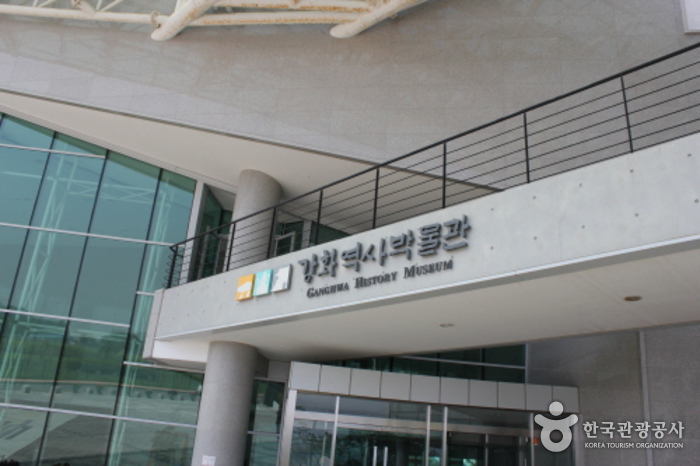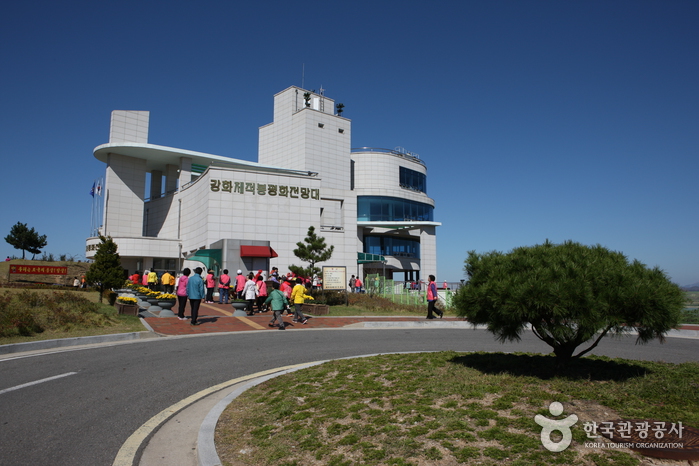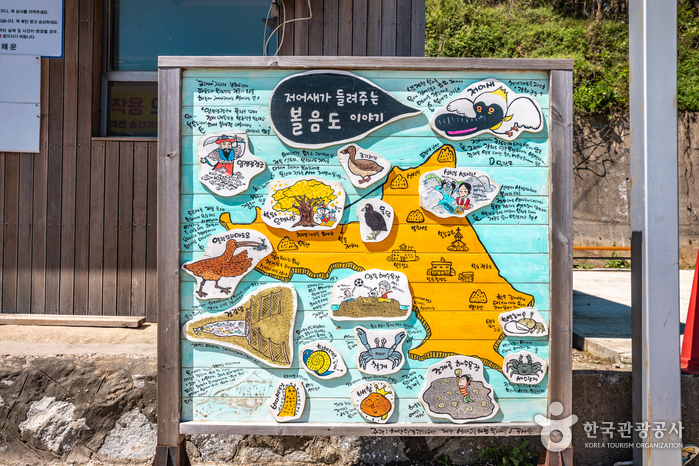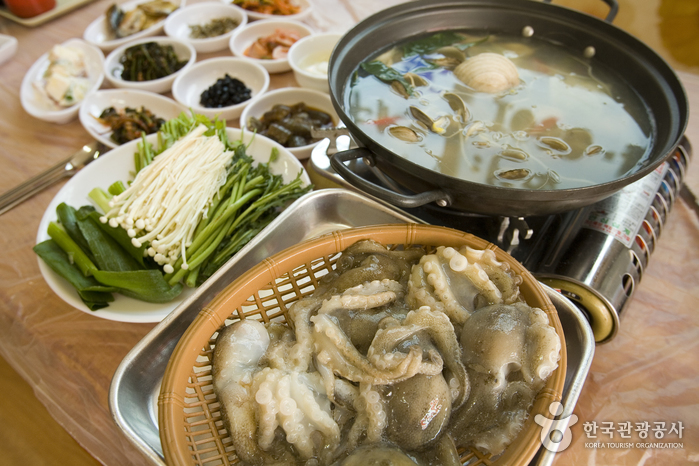Oepo-ri Kkotgejip (외포리꽃게집)
12.8Km 2024-03-20
1206 Jungang-ro, Naega-myeon, Ganghwa-gun, Incheon
Oepo-ri Kkotgejip is a restaurant dedicated to traditional blue crab delicacies, including kkotge tang (spicy blue crab stew), kkotge jjim (steamed blue crab), and ganjang gejang (soy sauce marinated crab). Positioned near Oepo-ri Quay, en route to Seongmodo Island, the restaurant provides a delectable experience of blue crab dishes complemented by a stunning sea view. Visitors can also take pleasure in the scenic Korean coastal landscape, explore the salted seafood market, and observe the fishing boats in the vicinity.
Ganghwa History Museum (강화역사박물관)
13.7Km 2021-08-13
994-19, Ganghwa-daero, Ganghwa-gun, Incheon
+82-32-934-7887
Ganghwa History Museum opened in 2010 with aims to exhibit, preserve and educate visitors about the history and culture of Ganghwa from prehistoric ages to modern times based on artifacts from the area.
Dolmen in Bugeun-ri [UNESCO World Heritage] (강화 고인돌 유적 [유네스코 세계문화유산])
13.9Km 2023-11-10
Bugeun-ri, Ganghwa-gun, Incheon
+82-32-933-3624
Dolmen in Bugeun-ri is a dolmen site in Ganghwa that was designated as a Historic Site for its historical value representing the funeral customs of the Bronze Age. The main stone used to create the tomb is 710 centimeters long, 550 centimeters wide, and 260 centimeters high. The dolmen is an example of the northern dolmen customs, serving as a subject of further research in the field of ancient history. The Dolmen in Bugeun-ri is also registered as a UNESCO World Heritage along with other significant dolmen sites.
Goryeosan Mountain (고려산)
14.4Km 2020-04-27
Gocheon-ri, Ganghwa-gun, Incheon
+82-32-930-3515
Goryeosan Mountain, once referred to as Oryeonsan, is a mountain rich in folklore. Legend has it that in the year 416 (during the reign of King Jangsu of Goguryeo), a Buddhist monk named Cheonchukguk climbed Goryeosan Mountain and found Oryeonji Pond where the five-colored lotus flowers bloomed. The monk picked the lotus flower petals and blew them into the air. He then built a temple where each of the petals had landed, naming the temples according to their corresponding color: Jeokseoksa Temple, formerly Jeokryeonsa Temple (red lotus), Baengnyeonsa Temple (white lotus), Cheongryeonsa Temple (blue lotus), Hwangryeonsa Temple (yellow lotus), and Heungnyeonsa Temple (black lotus).
Around 130 dolmens are distributed along the foot of Goryeosan Mountain. Sirumisan Mountain, on the northern side of Goryeosan Mountain is said to have been the birthplace of General Yeongaesomun of the Goguryeo Kingdom.
Ganghwado Jejeokbong Peace Observatory (강화도제적봉 평화전망대 )
14.4Km 2021-10-23
797, Jeonmangdae-ro, Ganghwa-gun, Incheon
+82-32-930-7062
Ganghwado Jejeokbong Peace Observatory was constructed in the northern area of the Civilian Restricted Zone in Cheolsan-ri, Yangsa-myeon. Entry to this area was strictly prohibited to the general public until 2008. The observatory allows visitors to take a closer look at the natural beauty the lies beyond the northern border. The observatory consists of four floors. The basement and fourth floor are used by the military; the first floor sells regional produce from Ganghwado Island and specialty products from North Korea, and the second and third floors make up the audio-visual rooms with materials related to North Korea and an observatory where one can observe the Northern territory from afar.
Boreumdo Island (Spoonbill Eco Village) (볼음도(저어새 생태마을))
14.5Km 2024-02-15
595-1 Boreumdo-ri, Seodo-myeon, Ganghwa-gun, Incheon
Boreumdo Island, situated in Seodo-myeon, Ganghwa-gun, is renowned as a habitat for spoonbills. The spoonbill, a rare migratory bird with a global population of around 3,000 individuals, finds refuge on this island. Since 2012, Boreumdo Island has been designated as a protected habitat for spoonbills, offering various experiential programs aimed at fostering an understanding of the tidal flat ecosystem. Key experiences include clam digging, net usage, and mudskipper fishing.
Tongilho (통일호)
14.9Km 2024-03-20
7-6 Eoryujeong-gil 212beon-gil, Samsan-myeon, Ganghwa-gun, Incheon
+82-32-934-8001
Tongilho is a picturesque hwareo hoe (sliced raw fish) restaurant situated on a hill with sweeping views of Minmeoru Beach in Seongmodo Island. The restaurant sources the freshest catch of the day directly from Janggot Harbor. Popular selections include sliced flatfish, rockfish, and sea bass, while the hearty saeng ureok tang (rockfish soup) stands out as a delightful option. The homemade Ganghwa sunmu kimchi (Ganghwa turnip kimchi) served as a side dish adds a special touch to the dining experience.
Minmeoru Beach (민머루해변)
15.0Km 2023-01-13
Eoryujeong-gil 212beon-gil, Ganghwa-gun, Incheon
+82-32-930-3515
Minmeoru Beach is a beach on Seongmodo Island, a small island to the west of Ganghwado Island. Visitors can enjoy sea bathing on the vast stretch of sandy beach and watch beautiful sunsets over the West Sea. When the tide goes out, a mud flat of approximately one kilometer in length appears. The mud flat is very smooth and is home to marine life including clams, crabs, and more. It is recommended for visitors to wear rubber boots or shoes when walking on the mud flat to prevent injuring their feet. The Eoryujeonghang Harbor and Janggothang Harbor are located nearby, so visitors can also enjoy sea fishing. Popular tourist attractions in the vicinity include Maaekseokbul (a Buddha image carved on a cliff) and Bomunsa Temple, which is said to have been constructed by Queen Seondeok during the Silla period.
Seongmodo Shrubby Sea-blite Habitat (석모도 칠면초 군락지)
15.1Km 2024-02-20
29-3 Maeeum-ri, Samsan-myeon, Ganghwa-gun, Incheon
Seongmodo Shrubby Sea-blite Habitat is a habitat where a colony of shrubby sea-blite flourishes on tidal flats. Situated on the route to Minmeoru Beach, accessible via the Seongmodaegyo Bridge, this area is known for the robust growth of seepweed, which forms colonies in tidal flats or areas with high salinity. From September to mid-October, the landscape transforms with vibrant reddish-pink flowers, often referred to as the "fall foliage of the sea."
Ganghwa Seodo Central Church (강화 서도 중앙교회)
15.5Km 2020-06-16
256-1, Jumundo-gil, Ganghwa-gun, Incheon
+82-32-760-6474
By the late Joseon dynasty, Ganghwado Island had already been attacked many times by foreign invaders. During the Byeonginyangyo (the French invasion in 1866), the French fleet stayed in Ganghwado for about a month until they withdrew their forces after losing during the Jeongjoksanseong Battle. During the Sinmiyangyo (the United States expedition to Korea in 1981), the American fleet attacked Chojijin Fortress, Deokjinjin Fortress and Gwangseongbo Fortress. Hence,
Ganghwado played a big part in South Korea opening its doors to the West in the 19th century. Ganghwado also became the Western Christian missionaries' center of activity for their missionary works.
There are three remaining churches that were built in that time that were influenced or built by the Western Christian Missionaries: Ganghwa Anglican Church established in 1900, Ganghwa St. Andrew's Church established in 1906, and Ganghwa Seodo Central Church established in 1923.
Ganghwa Seodo Central Church started contruction in February 1923 and was completed as a Korean-architecture chapel in July 1923. The original name was Jumun Church and it was renamed as Seodo Central (Jungang) Church in 1978. The church belongs to The Korean Methodist Church.
Even though the building of the church doesn't reflect outstanding building techniques and aesthetic qualities, a Western church with a Korean-style wooden structure such as Ganghwa Seodo Central Church is still worth a visit.


![Dolmen in Bugeun-ri [UNESCO World Heritage] (강화 고인돌 유적 [유네스코 세계문화유산])](http://tong.visitkorea.or.kr/cms/resource/77/1876577_image2_1.jpg)




 English
English
 한국어
한국어 日本語
日本語 中文(简体)
中文(简体) Deutsch
Deutsch Français
Français Español
Español Русский
Русский